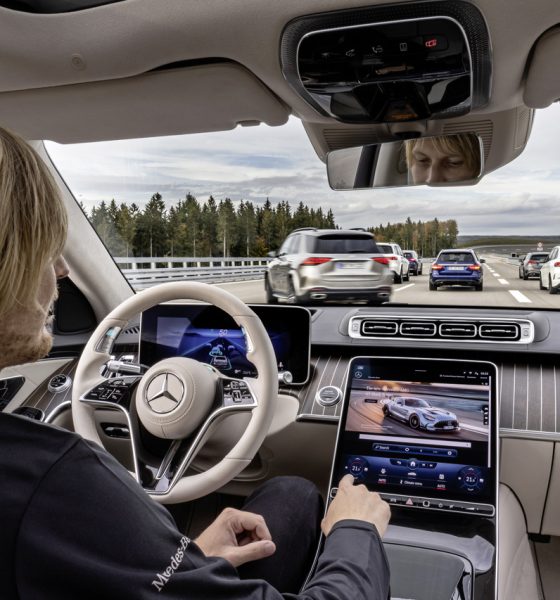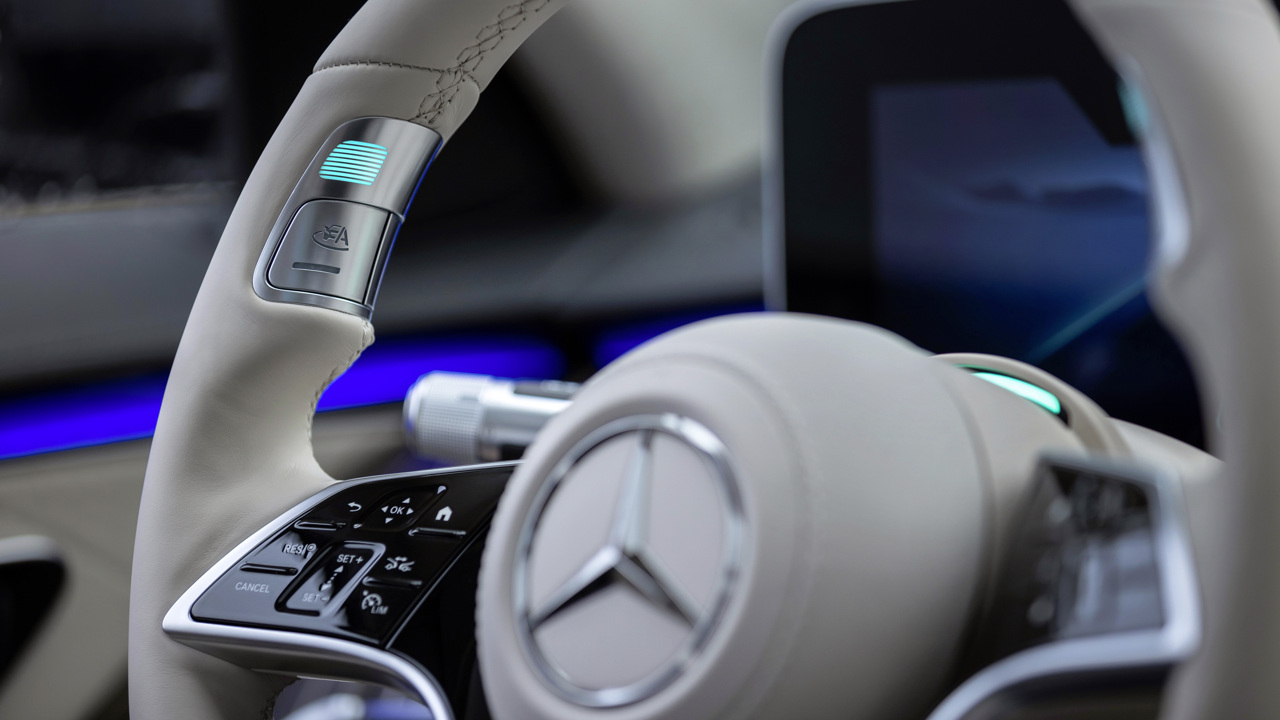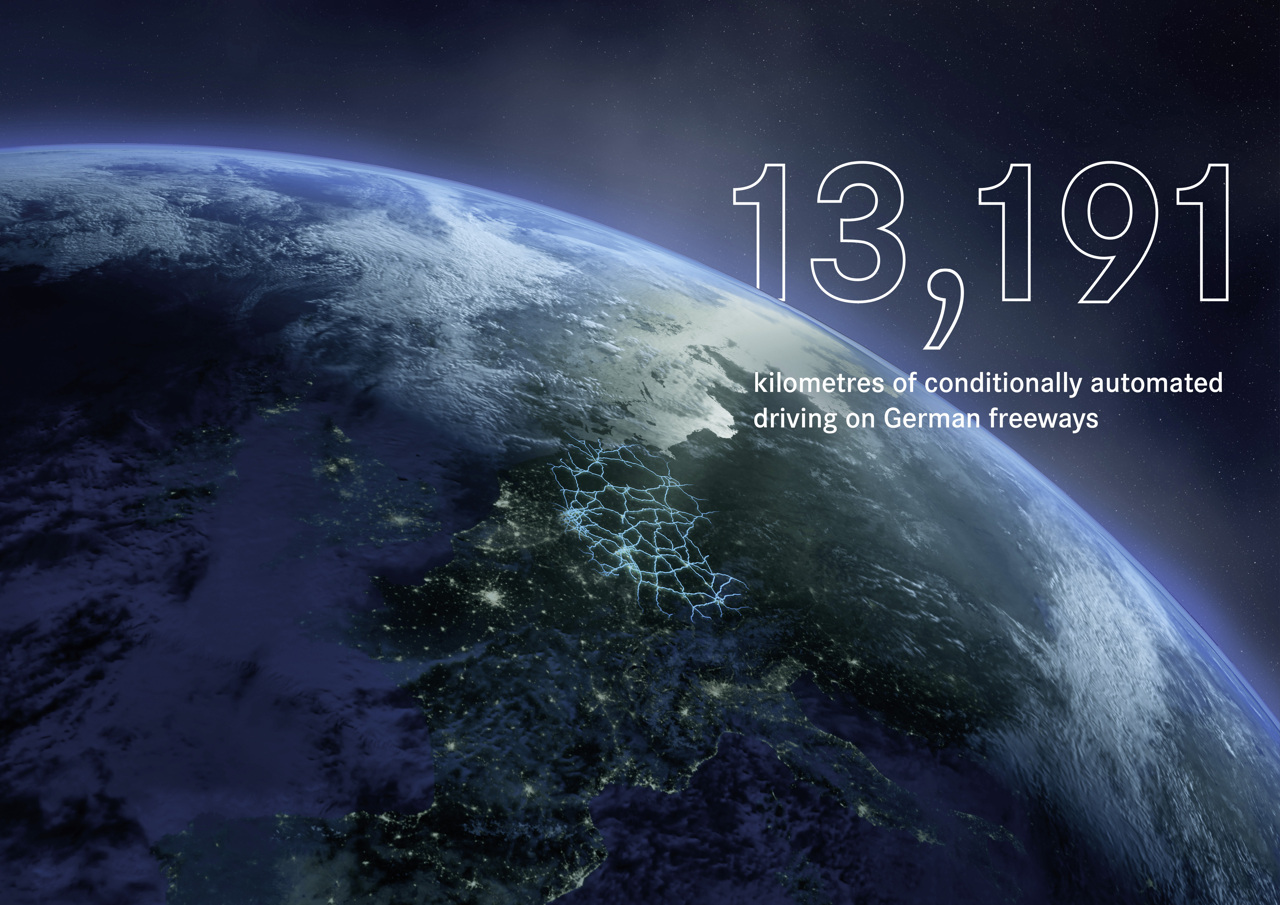

News
Mercedes-Benz DRIVE PILOT captures world’s first approval for hands-free driving
Mercedes-Benz DRIVE PILOT has captured the world’s first approval for ‘conditionally automated’ driving on German highways with its Level 3 system. The German automaker’s DRIVE PILOT is the first internationally valid system, as it met the requirements of Global Automotive Regulation No. 157, which concerns the approval of vehicles with regards to Automated Lane-Keeping Systems.
Mercedes-Benz announced the accomplishment, calling it proof of the company’s “pioneering work in automated driving.” The German Federal Motor Transport Authority granted the approval.
“For many years, we have been working to realize our vision of automated driving. With this LiDAR-based system, we have developed an innovative technology for our vehicles that offers customers a unique, luxurious driving experience and gives them what matters most: time. With the approval of the authorities, we have now achieved a breakthrough: We are the first manufacturer to put conditionally automated driving into series production in Germany,” Member of the Board of Management of Daimler AG and Mercedes-Benz AG, Chief Technology Officer responsible for Development and Purchasing Markus Schäfer said.
Die Bedienelemente für den DRIVE PILOT sitzen im Lenkradkranz oberhalb der Daumenmulden rechts und links. Aktiviert der Fahrer den DRIVE PILOT, regelt das System Geschwindigkeit und Abstand und führt das Fahrzeug souverän innerhalb der Spur. // The controls for DRIVE PILOT are located in the steering wheel rim above the thumb recesses on the right and left. If the driver activates DRIVE PILOT, the system regulates speed and distance and guides the vehicle confidently within the lane.
DRIVE PILOT will first be available in Mercedes-Benz S-Class models in the first half of 2022. There will be initial limitations with the functionality’s ability, and drivers will only be able to drive at speeds of up to 60 km/h or 37 MPH on German highways. This will effectively limit the Level 3 system to operating in “heavy traffic or congested situations on suitable stretches of highway in Germany.” Regularly flowing traffic patterns at speeds that exceed the approved limits will require a normal driving operation.
Levels of autonomous driving have been outlined by the Society of Automotive Engineers (SAE). Level 3 Autonomy does not require humans to perform the act of driving. However, of the three levels that allow hands-free driving, which are Levels 3, 4, and 5, Level 3 is the only category in which the driver must take over if the vehicle requests human intervention. Level 3 is effectively described as a “traffic jam chauffeur,” which would align with the capabilities of the DRIVE PILOT system.
“During the conditionally automated journey, DRIVE PILOT allows the driver to take their mind off the traffic and focus on certain secondary activities, be it communicating with colleagues via In-Car Office, surfing the internet, or relaxing while watching a film. In DRIVE PILOT mode, applications can be enabled on the vehicle’s integrated central display that are otherwise blocked while driving,” the automaker wrote.
The system will initially be available on 8,197 miles or 13,191 kilometers of German highway. Mercedes-Benz said that it is working on completing extensive test drives in other markets, including the U.S. and China, so that it can launch DRIVE PILOT in countries outside of Germany.
DRIVE PILOT in der S-Klasse: Hochautomatisiertes Fahren auf Deutschlands Autobahnen // DRIVE PILOT in the S-Class: Conditionally automated driving on German freeways
DRIVE PILOT uses a LiDAR-based system for operation, but it also has a camera in the rear window and a microphone, which will both be used to detect approaching emergency vehicles by recognizing flashing blue lights and sirens. There is also a moisture sensor in the wheel well, used for detecting slippery or wet driving conditions. A digital HD map will transmit information regarding road geometry, route profile, traffic signs, and unusual traffic events, including accidents or road work, to DRIVE PILOT, helping it make informed and logical decisions throughout the vehicle’s operation.
Mercedes-Benz also said that it has implemented a safety system that will inform the driver of when the vehicle needs to be back in the control of a human. If the driver fails to take back control of the car for any reason, including medical emergencies, the vehicle’s braking system will bring the car to a stop in a controlled manner while also activating hazard lights. Mercedes-Benz has an emergency call system, which will automatically contact first responders, and the vehicle’s doors and windows will unlock for easier access for first responders.
Mercedes-Benz has been working to get DRIVE PILOT approved by regulators since mid-2021.
I’d love to hear from you! If you have any comments, concerns, or questions, please email me at joey@teslarati.com. You can also reach me on Twitter @KlenderJoey, or if you have news tips, you can email us at tips@teslarati.com.

Elon Musk
Starlink passes 9 million active customers just weeks after hitting 8 million
The milestone highlights the accelerating growth of Starlink, which has now been adding over 20,000 new users per day.

SpaceX’s Starlink satellite internet service has continued its rapid global expansion, surpassing 9 million active customers just weeks after crossing the 8 million mark.
The milestone highlights the accelerating growth of Starlink, which has now been adding over 20,000 new users per day.
9 million customers
In a post on X, SpaceX stated that Starlink now serves over 9 million active users across 155 countries, territories, and markets. The company reached 8 million customers in early November, meaning it added roughly 1 million subscribers in under seven weeks, or about 21,275 new users on average per day.
“Starlink is connecting more than 9M active customers with high-speed internet across 155 countries, territories, and many other markets,” Starlink wrote in a post on its official X account. SpaceX President Gwynne Shotwell also celebrated the milestone on X. “A huge thank you to all of our customers and congrats to the Starlink team for such an incredible product,” she wrote.
That growth rate reflects both rising demand for broadband in underserved regions and Starlink’s expanding satellite constellation, which now includes more than 9,000 low-Earth-orbit satellites designed to deliver high-speed, low-latency internet worldwide.
Starlink’s momentum
Starlink’s momentum has been building up. SpaceX reported 4.6 million Starlink customers in December 2024, followed by 7 million by August 2025, and 8 million customers in November. Independent data also suggests Starlink usage is rising sharply, with Cloudflare reporting that global web traffic from Starlink users more than doubled in 2025, as noted in an Insider report.
Starlink’s momentum is increasingly tied to SpaceX’s broader financial outlook. Elon Musk has said the satellite network is “by far” the company’s largest revenue driver, and reports suggest SpaceX may be positioning itself for an initial public offering as soon as next year, with valuations estimated as high as $1.5 trillion. Musk has also suggested in the past that Starlink could have its own IPO in the future.
News
NVIDIA Director of Robotics: Tesla FSD v14 is the first AI to pass the “Physical Turing Test”
After testing FSD v14, Fan stated that his experience with FSD felt magical at first, but it soon started to feel like a routine.

NVIDIA Director of Robotics Jim Fan has praised Tesla’s Full Self-Driving (Supervised) v14 as the first AI to pass what he described as a “Physical Turing Test.”
After testing FSD v14, Fan stated that his experience with FSD felt magical at first, but it soon started to feel like a routine. And just like smartphones today, removing it now would “actively hurt.”
Jim Fan’s hands-on FSD v14 impressions
Fan, a leading researcher in embodied AI who is currently solving Physical AI at NVIDIA and spearheading the company’s Project GR00T initiative, noted that he actually was late to the Tesla game. He was, however, one of the first to try out FSD v14.
“I was very late to own a Tesla but among the earliest to try out FSD v14. It’s perhaps the first time I experience an AI that passes the Physical Turing Test: after a long day at work, you press a button, lay back, and couldn’t tell if a neural net or a human drove you home,” Fan wrote in a post on X.
Fan added: “Despite knowing exactly how robot learning works, I still find it magical watching the steering wheel turn by itself. First it feels surreal, next it becomes routine. Then, like the smartphone, taking it away actively hurts. This is how humanity gets rewired and glued to god-like technologies.”
The Physical Turing Test
The original Turing Test was conceived by Alan Turing in 1950, and it was aimed at determining if a machine could exhibit behavior that is equivalent to or indistinguishable from a human. By focusing on text-based conversations, the original Turing Test set a high bar for natural language processing and machine learning.
This test has been passed by today’s large language models. However, the capability to converse in a humanlike manner is a completely different challenge from performing real-world problem-solving or physical interactions. Thus, Fan introduced the Physical Turing Test, which challenges AI systems to demonstrate intelligence through physical actions.
Based on Fan’s comments, Tesla has demonstrated these intelligent physical actions with FSD v14. Elon Musk agreed with the NVIDIA executive, stating in a post on X that with FSD v14, “you can sense the sentience maturing.” Musk also praised Tesla AI, calling it the best “real-world AI” today.
News
Tesla AI team burns the Christmas midnight oil by releasing FSD v14.2.2.1
The update was released just a day after FSD v14.2.2 started rolling out to customers.

Tesla is burning the midnight oil this Christmas, with the Tesla AI team quietly rolling out Full Self-Driving (Supervised) v14.2.2.1 just a day after FSD v14.2.2 started rolling out to customers.
Tesla owner shares insights on FSD v14.2.2.1
Longtime Tesla owner and FSD tester @BLKMDL3 shared some insights following several drives with FSD v14.2.2.1 in rainy Los Angeles conditions with standing water and faded lane lines. He reported zero steering hesitation or stutter, confident lane changes, and maneuvers executed with precision that evoked the performance of Tesla’s driverless Robotaxis in Austin.
Parking performance impressed, with most spots nailed perfectly, including tight, sharp turns, in single attempts without shaky steering. One minor offset happened only due to another vehicle that was parked over the line, which FSD accommodated by a few extra inches. In rain that typically erases road markings, FSD visualized lanes and turn lines better than humans, positioning itself flawlessly when entering new streets as well.
“Took it up a dark, wet, and twisty canyon road up and down the hill tonight and it went very well as to be expected. Stayed centered in the lane, kept speed well and gives a confidence inspiring steering feel where it handles these curvy roads better than the majority of human drivers,” the Tesla owner wrote in a post on X.
Tesla’s FSD v14.2.2 update
Just a day before FSD v14.2.2.1’s release, Tesla rolled out FSD v14.2.2, which was focused on smoother real-world performance, better obstacle awareness, and precise end-of-trip routing. According to the update’s release notes, FSD v14.2.2 upgrades the vision encoder neural network with higher resolution features, enhancing detection of emergency vehicles, road obstacles, and human gestures.
New Arrival Options also allowed users to select preferred drop-off styles, such as Parking Lot, Street, Driveway, Parking Garage, or Curbside, with the navigation pin automatically adjusting to the ideal spot. Other refinements include pulling over for emergency vehicles, real-time vision-based detours for blocked roads, improved gate and debris handling, and Speed Profiles for customized driving styles.








